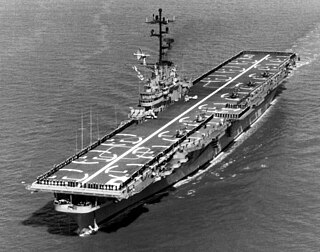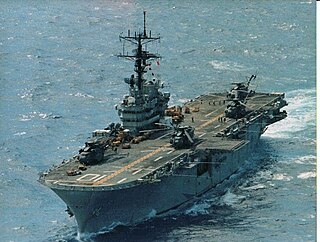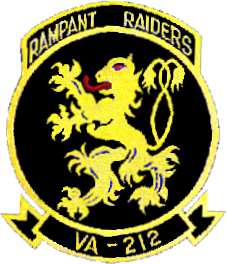Operation
The operation began on the morning of 26 March with a preliminary bombardment by Robison and aircraft from Hancock. A Marine company then landed from surface craft near Dong Hoa on the western end of the peninsula. Two companies were then landed on the center and eastern end of the peninsula by helicopter encountering only scattered sniper fire. During the first night 21 four–man night observation posts were established. The VC attacked one position with grenades killing 2 Marines and starting a brief firefight that resulted in 3 VC killed. [1] : 100
That same night the VC ambushed PCF-31 1 mile (1.6 km) inland from Cần Giờ on the Long Thanh Peninsula, seriously wounding one crewman and severely damaging the PCF. [1] : 100–1
On 28 March the Marines landed unopposed on the Soài Rạp River. On 31 March following airstrikes from the Hancock air group, gunfire from USS Henry County and USS Washoe County and Ontos fire from the deck of Henry County the Marines assaulted the banks of the Vam Sat River, a major VC logistical area linking a VC headquarters with the Soài Rạp. The landing was unopposed and the Marines discovered a VC weapons cache with 18 carbines and 1,000 grenades. [1] : 101
Over the following days the U.S. Marines and South Vietnamese Marines conducted three further amphibious assaults into the zone uncovering VC base areas and supplies, but without meeting any serious resistance. [1] : 102

USS Princeton was one of 24 Essex-class aircraft carriers built during and shortly after World War II for the United States Navy. The ship was the fifth US Navy ship to bear the name, and was named for the Revolutionary War Battle of Princeton. Princeton was commissioned in November 1945, too late to serve in World War II, but saw extensive service in the Korean War, in which she earned eight battle stars, and the Vietnam War. She was reclassified in the early 1950s as an attack carrier (CVA), then as an Antisubmarine Aircraft Carrier (CVS), and finally as an amphibious assault ship (LPH), carrying helicopters and marines. One of her last missions was to serve as the prime recovery ship for the Apollo 10 space mission.

Operation Market Time was the United States Navy, Republic of Vietnam Navy and Royal Australian Navy operation begun in 1965 to stop the flow of troops, war material, and supplies by sea, coast, and rivers, from North Vietnam into parts of South Vietnam during the Vietnam War. Also participating in Operation Market Time were United States Coast Guard's Squadron One and Squadron Three. The U.S. Coast Guard operated under U.S. Navy command heavily armed 82-foot (25 m) patrol boats and large cutters that included 5-inch naval guns used in battle and gunfire support.

USS Tripoli (LPH-10), an Iwo Jima-class amphibious assault ship, was laid down on 15 June 1964 at Pascagoula, Mississippi, by the Ingalls Shipbuilding Corporation; launched on 31 July 1965; sponsored by Jane Cates, the wife of General Clifton B. Cates, former Commandant of the Marine Corps; and commissioned on 6 August 1966 at the Philadelphia Naval Shipyard. Tripoli was the second US Navy ship named for the Battle of Derna in 1805. It was the decisive victory of a mercenary army led by a detachment of US Marines and US Army soldiers against the forces of Tripoli during the First Barbary War. It was the first recorded land battle of the United States fought overseas.

Operation Starlite was the first major offensive action conducted by a purely U.S. military unit during the Vietnam War from 18 to 24 August 1965. The operation was launched based on intelligence provided by Major general Nguyen Chanh Thi, the Army of the Republic of Vietnam (ARVN) I Corps commander. III Marine Amphibious Force commander Lieutenant General Lewis W. Walt devised a plan to launch a pre-emptive strike against the Viet Cong (VC) 1st Regiment to nullify their threat to the vital Chu Lai Air Base and Base Area and ensure its powerful communication tower remained intact.

USS Rowan (DD-782) was a Gearing-class destroyer of the United States Navy, the fourth Navy ship named for Vice Admiral Stephen C. Rowan (1805–1890).

USS Krishna (ARL-38) was one of 39 Achelous-class landing craft repair ships built for the United States Navy during World War II. Named for Krishna, she was the only U.S. Naval vessel to bear the name, and only one of three ships to be named after a Hindu deity.

Operation Game Warden was a joint operation conducted by the United States Navy and South Vietnamese Navy in order to deny Viet Cong access to resources in the Mekong River Delta. Game Warden and its counterpart Operation Market Time are considered to be two of the most successful U.S. Naval actions during the Vietnam War.

USS Terrell County (LST-1157), originally USS LST-1157, was a Terrebonne Parish-class tank landing ship built for the United States Navy in 1952. Named for Terrell County, Texas, and Terrell County, Georgia, she was the only U.S. Navy vessel to bear the name. She was later lent to Greece and subsequently sold to Greece, being renamed Oinoussai (L104) in Greek service.
Rung Sat Special Zone was the name given during the Vietnam War by the South Vietnam Government and American forces to a large area of the Sác Forest, which is today known as the Cần Giờ Mangrove Forest. It was also known as the "Forest of Assassins." The name was derived from a misinterpretation of the Vietnamese word Sát to mean "assassin". The actual name, Rừng Sác, is a Sino-Vietnamese word that roughly translated to "salty forest," a reference to its proximity to the saltwater marshes of the delta.

Coast Guard Squadron One, also known in official message traffic as COGARDRON ONE or RONONE, was a combat unit formed by the United States Coast Guard in 1965 for service during the Vietnam War. Placed under the operational control of the United States Navy, it was assigned duties in Operation Market Time. Its formation marked the first time since World War II that Coast Guard personnel were used extensively in a combat environment.
Operation Coronado IV was the fourth of the Operation Coronado series of riverine military operations conducted by the U.S. Mobile Riverine Force (MRF), designed to shut down Viet Cong (VC) strongholds in the Mekong Delta. It ran from 19 August to 9 September 1967. It took place in Long An, Gò Công and Kiến Hòa Provinces.
The action of 1 March 1968 was a co-ordinated attempt by four North Vietnamese trawlers to resupply the Viet Cong and the efforts of Operation Market Time elements to stop them during the Vietnam War. On 28 February 1968, United States Navy SP-2H Neptune aircraft on routine patrol detected a North Vietnamese SL class naval trawler heading towards the South Vietnamese coast from north of the DMZ. By the next morning, three more trawlers were discovered and units of Operation Market Time were deployed for a surprise interception. The suspect trawlers did not fly flags so it was not until the start of the engagement that their origin was discovered. The trawlers were steel-hulled vessels, 100 feet long and armed with 57-millimeter recoilless rifles and machine guns. All four vessels were loaded with weapons and ammunition intended to be delivered to the Viet Cong. American and South Vietnamese forces that engaged in action included the United States Coast Guard cutters Androscoggin, Point Grey, Point Welcome, Winona, Point Grace, Point Hudson, Point Marone, the swift boats USS PCF-18, USS PCF-20, USS PCF-42, USS PCF-43, USS PCF-46, USS PCF-47 and USS PCF-48, two South Vietnamese navy junks and one patrol boat. Two U.S. Army helicopter gunships also participated in combat as well as aircraft used to fire flares.

USCGC Point Cypress (WPB-82326) was an 82-foot (25 m) Point-class cutter constructed at the Coast Guard Yard at Curtis Bay, Maryland in 1961 for use as a law enforcement and search and rescue patrol boat. Since the Coast Guard policy in 1961 was not to name cutters under 100-foot (30 m) in length, it was designated as WPB-82326 when commissioned and acquired the name Point Cypress in January 1964 when the Coast Guard started naming all cutters longer than 65-foot (20 m).
USCGC Point Partridge (WPB-82305) was an 82-foot (25 m) Point-class cutter constructed at the Coast Guard Yard at Curtis Bay, Maryland in 1960 for use as a law enforcement and search and rescue patrol boat. Since the Coast Guard policy in 1960 was not to name cutters under 100-foot (30 m) in length, it was designated as WPB-82305 when commissioned and acquired the name Point Partridge in January 1964 when the Coast Guard started naming all cutters longer than 65-foot (20 m).

USCGC Point White (WPB-82308) was an 82-foot (25 m) Point class cutter constructed at the Coast Guard Yard at Curtis Bay, Maryland in 1961 for use as a law enforcement and search and rescue patrol boat. Since the Coast Guard policy in 1961 was not to name cutters under 100 feet (30 m) in length, it was designated as WPB-82308 when commissioned and acquired the name Point White in January 1964 when the Coast Guard started naming all cutters longer than 65 feet (20 m).

Attack Squadron 212 (VA-212), nicknamed the Rampant Raiders, was an aviation unit of the United States Navy. It was established as Fighter Squadron 212 (VF-212) on 20 June 1955, and redesignated as VA-212 on 1 April 1956. The squadron was disestablished on 12 December 1975.

VA-215, nicknamed the Barn Owls, was an Attack Squadron of the U.S. Navy. It was established 22 June 1955, and disestablished on 31 August 1967.

Operation Bold Mariner was a US Marine Corps operation that took place on the Batangan Peninsula southeast of Chu Lai, lasting from 12 January to 7 February 1969.

Operation Crazy Horse, named after Lakota warrior Crazy Horse, was a search and destroy mission during the Vietnam War conducted by military forces of the United States, South Vietnam, and the Republic of South Korea in two valleys in Bình Định Province of South Vietnam.

USS White River (LSMR-536) was a Landing Ship Medium (Rocket) (LSMR) in service with the US Navy between 1945 and 1946, 1950 and 1956, and 1965 and 1970. As a member of the LSM(R)-501-class Landing Ship Medium (Rocket), White River was designed to provide rocket fire support to US and allied amphibious operations, although in South Vietnam she was generally used to bombard enemy formations and installations. She saw combat in the Korean and Vietnam Wars, making a large contribution to the latter, in which she fired tens to hundreds of thousands of rockets in support of American, South Vietnamese, and South Korean operations against the Viet Cong during ten tours of duty in Vietnam, 1966 through 1969. In Navy publications such as All Hands and the Navy Times, as well as in the recollections of crew, forward observers and spotters, and ground forces receiving her support, White River was reported to have the firepower of six destroyers or a cruiser. She could fire 250 65-pound (29 kg) rockets in a minute, plus 5-inch shells and autocannon fire, and carry a magazine of 1,500-2,000 rockets.
















